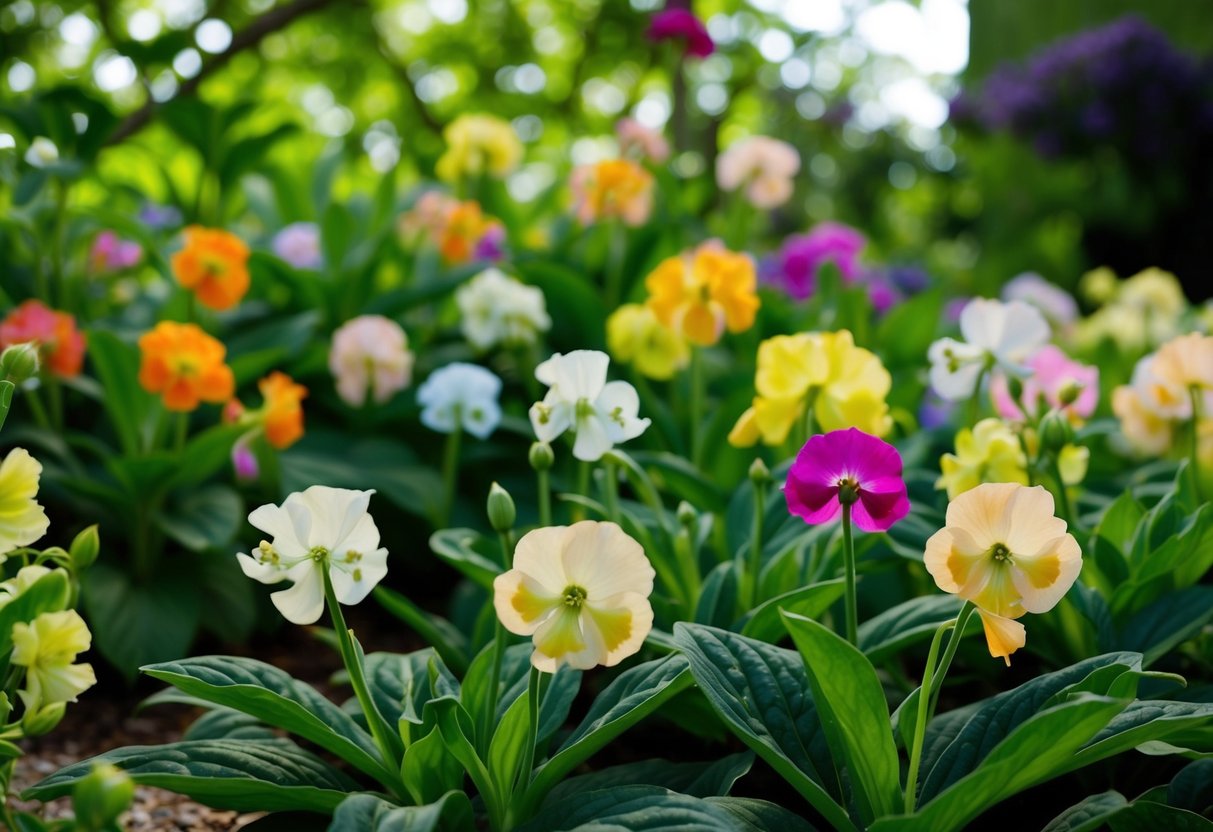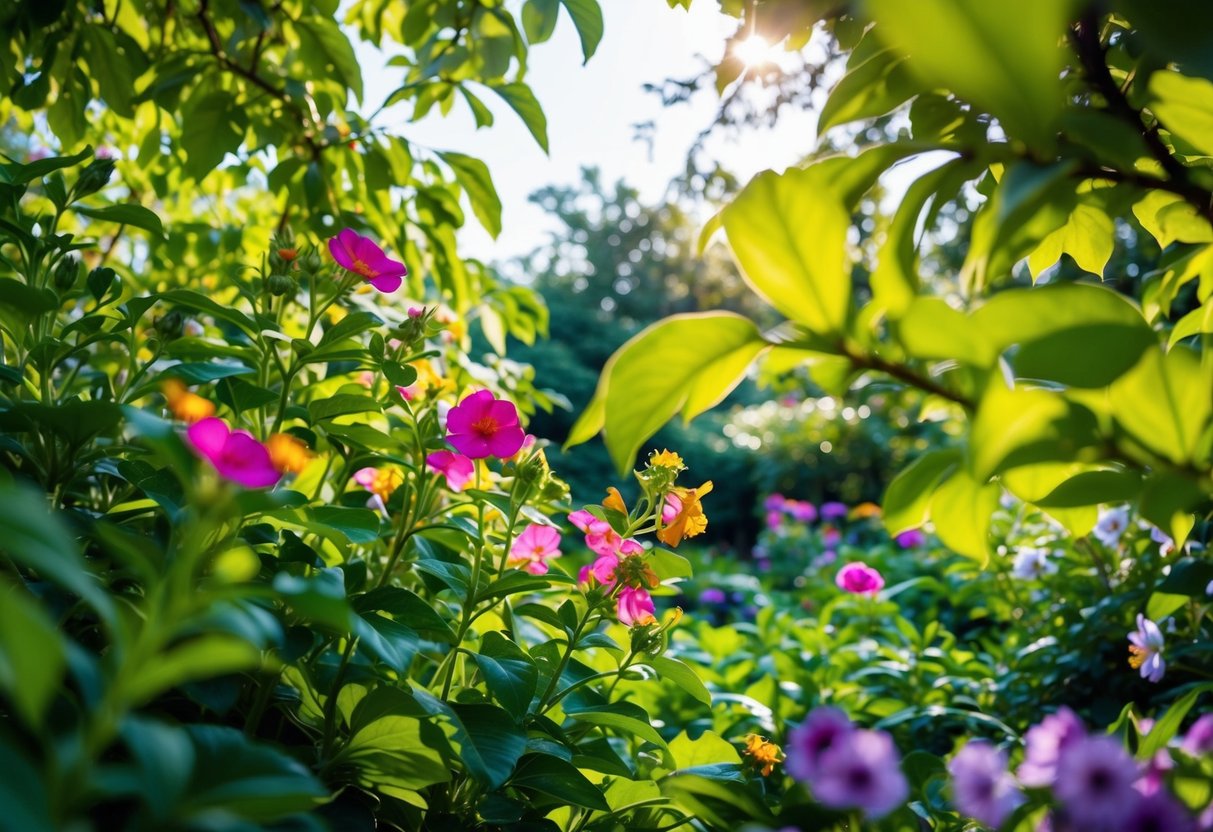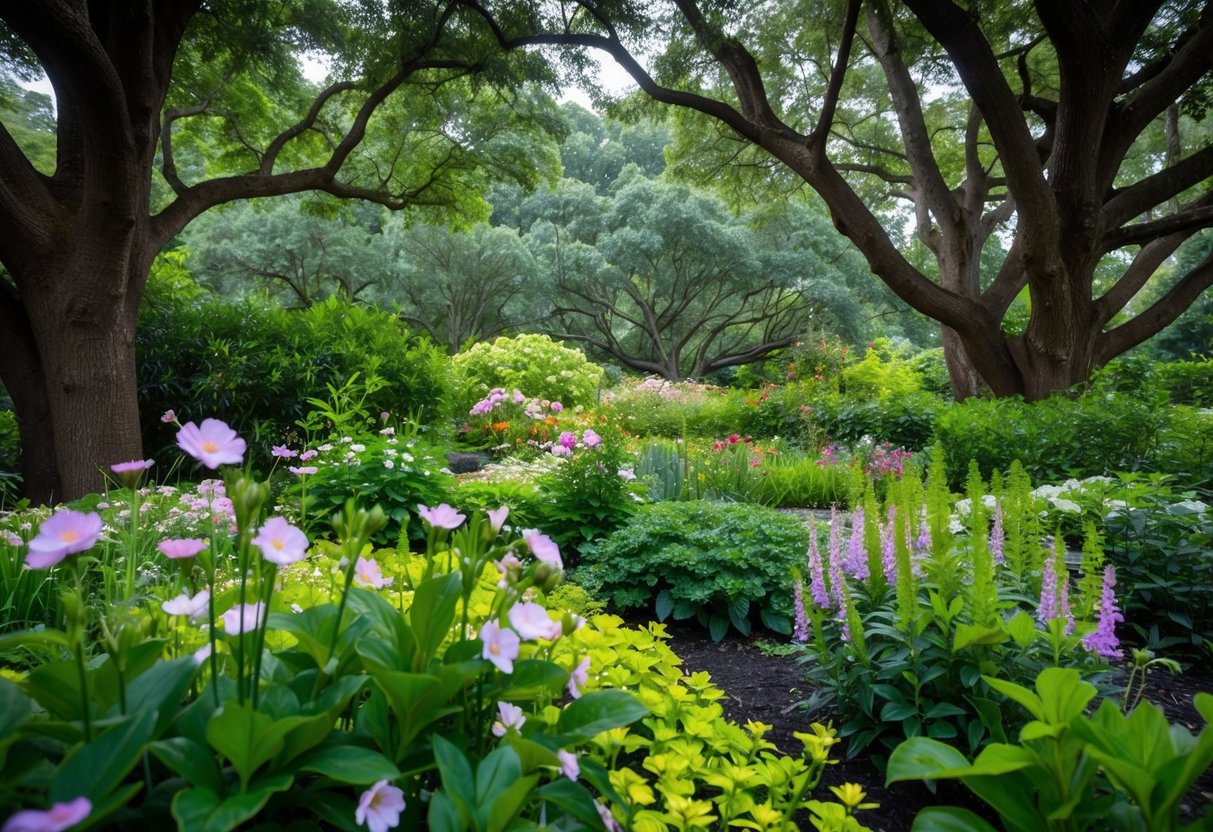What is the Best Flower to Grow in Shade? Top Choices for Shady Spots
Gardening in the shade can be a delightful experience, especially when you choose the right flowers to bring life and color to those shady spots. It’s easy to think that shade means no blooms, but many plants thrive without direct sunlight. One of the best options for shade-loving flowers is the yellow corydalis. These flowers add a pop of color and brighten any shaded area in your garden.

When looking for perennial flowers that love the shade, you might consider coral bells. These plants require little maintenance, and their beautiful, colorful foliage makes them a standout choice. Another lovely shade-loving perennial is the Solomon’s Seal, which has elegant arching stems and bell-shaped flowers. They add a graceful look to a shade garden, thriving in both partial and full shade.
If you want something unique, Tojen offers lavender blooms that remind some of orchids. This plant does well in both full and partial shade, making it a versatile choice for your garden. Each shade-loving flower brings its own charm, and you’ll find that your shady areas can become some of the most attractive spots in your garden.
Understanding Shade in Your Garden

In your garden, shade can vary from spot to spot, affecting what you can plant. Knowing the different types of shade and how to assess sun exposure helps you choose the best flowers for your shady areas.
Types of Shade
There are different shades of shade! The term “partial shade” means your plants will get some morning or afternoon sun but are protected from intense midday rays. This can be perfect for many flowering plants.
On the other hand, “full shade” areas receive very little direct sunlight throughout the day. These spots may still get bright, indirect light, making them suitable for certain plant species like ferns or hostas.
Certain plants thrive depending on the shade level and the USDA hardiness zones, which guide you on what plants can handle local climate conditions. Observing your garden’s light patterns during the day helps in choosing the right spot for your shade-loving flowers.
Assessing Sun Exposure
To measure sun exposure, watch how light moves across your garden throughout the day. Keep an eye on how long the sun hits different areas.
A sunlight journal or even photos taken at different times can be handy for tracking. Morning and late afternoon sun is less intense than midday sun, which is crucial in partial shade areas.
Knowing about the seasons is helpful too. Trees may block more light in summer and less during winter and early spring. With this knowledge, you can better plan where to plant your shade-loving flowers for the best growth and bloom.
Selecting the Best Flowers for Shade

Choosing flowers for shaded areas can enhance your garden with pops of color and lush foliage. You’ll find options that thrive in both full shade and partial shade, bringing life to even the dimmest corners of your landscape.
Top Picks for Full Shade Areas
In full shade, Bleeding Heart is a striking choice. With its heart-shaped pink and white blooms, it adds a romantic touch to any garden. These beauties prefer moist, well-drained soil and can grow well under trees with heavy canopies.
Hostas are another excellent option. Known for their wide range of leaf colors and textures, they provide a rich backdrop in shaded spots. They require minimal sunlight and are quite hardy, making them a low-maintenance favorite.
For a touch of elegance, consider Astilbe. This plant offers fluffy, colorful plumes and can tolerate full shade. It performs best in moist, rich soil, so be sure to keep it well-watered.
Top Picks for Partial Shade Areas
In areas with partial shade, Fuchsia can be a vibrant choice. Its pendulous blooms come in vivid pinks and purples, making it an eye-catching addition. It thrives in partially shaded areas with rich, well-drained soil.
Impatiens are classic shade flowers known for their variety of colors. They’re easy to grow and can fill your garden with blossoms in hues of pink, red, and white. These do well with a few hours of morning sun.
Torenia, or wishbone flower, is ideal for adding playful color. With its trumpet-shaped blooms in purples and blues, it’s perfect for hanging baskets or garden borders. It prefers partial shade and regular watering.
Hydrangeas can also flourish in partial shade, offering large flower heads in shades of blue, pink, or white. These plants like moist soil, so maintaining adequate water is key for healthy growth.
Soil and Water Requirements for Shade-Loving Plants

Understanding the specific needs of shade-loving plants is key to helping them thrive. Proper soil conditions and watering practices are crucial for their healthy growth and development.
Optimizing Soil Conditions
Shade-loving plants often require soil that is well-drained to prevent root rot. It’s important to mix organic matter, like compost or peat moss, into the soil to enhance drainage. This also helps retain the right amount of moisture for the plants.
Checking the pH level is another important step. Many shade plants, such as camellias, prefer slightly acidic conditions, so consider testing your soil and adjusting it with lime or sulfur as needed. Keep an eye on the soil texture as well. It should be crumbly and airy to promote optimal growth.
Watering Practices for Shade Plants
Watering needs for shade-loving plants can differ from sun-loving varieties. These plants usually need less water since they are not exposed to drying sun.
It’s best to water deeply but less frequently to encourage root growth. Make sure water reaches the roots but doesn’t make the soil soggy.
Watering in the morning is ideal, as it allows excess moisture to evaporate throughout the day. Mulching around the base of your plants can help retain moisture in the soil and reduce the need for frequent watering, especially during dry spells. Always adjust your watering habits based on rainfall and temperature changes.
Designing a Shade Garden

When designing a shade garden, think about the textures and colors you want to include, as well as interesting vertical elements. These choices can transform a shady area into a vibrant and eye-catching space, full of depth and engagement.
Creating Visual Interest with Texture and Color
Mixing textures and colors can make your shade garden look lively. Ferns, with their delicate leaves, offer a soft, feathery texture. Pair them with broad-leafed plants like hostas or coleus for contrast. For a splash of color, consider caladium with its pink and red hues. Using hanging baskets with trailing plants adds another layer of texture.
In terms of color, choose plants with varied foliage shades like deep greens or purples. The goal is to create visual contrast, making each plant stand out. Grouping similar shades can create harmony, while contrasting colors draw attention and curiosity. Your choice of flowers adds pops of color—consider using different varieties to showcase the beauty of the shade.
Incorporating Vertical Elements
Vertical elements can add structure and height to your garden. Use tall, shade-loving plants such as foxgloves or small trees to direct the eye upward. These plants create a sense of depth and layered interest in your space.
Consider adding trellises or arches for vining plants like climbing hydrangeas. This not only adds dimension but also maximizes your use of space. Hanging baskets filled with cascading blooms or ferns can add both height and texture when placed at various levels.
Vertical elements add drama and character, transforming a flat garden into a complex, inviting design. By thoughtfully arranging plants and structures, you create a dynamic environment that engages and delights your senses.
Caring for Shade-Loving Flowers

Shade-loving flowers can thrive with proper care and attention. Understanding the specific needs of these plants can help them flourish. This includes regular maintenance and pest management to keep your garden vibrant.
Maintenance Tips for Shade Perennials
Taking care of shade perennials involves adjusting watering schedules and soil management. Since these plants do not receive as much sun, you need to be careful not to overwater.
Check the soil moisture regularly; the top few inches should be moderately dry before you water again.
Mulching helps retain moisture and suppress weeds. Apply a layer of organic mulch around plants like false spirea to achieve this. Fertilize once in early spring with a balanced, slow-release fertilizer to support growth.
Pruning is necessary for some shade perennials. For instance, remove spent blooms to encourage more flowers. Regularly check for dead or damaged leaves and trim them. This not only improves appearance but also helps prevent disease.
Common Pests and How to Manage Them
Shade-loving plants are not immune to pests. Common intruders include slugs and snails, which thrive in damp, shaded environments.
To manage these, you can use barriers like copper tape or sprinkle diatomaceous earth around plants.
Inspect your plants regularly. Look for aphids, which can be controlled with insecticidal soap or a strong water spray to remove them.
Another threat to shade perennials is spider mites. They are particularly active during dry periods.
You can increase humidity by misting plants or using a humidifier. Introducing beneficial insects like ladybugs can also help keep pest populations in check.
Always be on the lookout for unusual spots or discoloration on leaves. Address any issues promptly to ensure your shade-loving garden stays healthy and beautiful.







